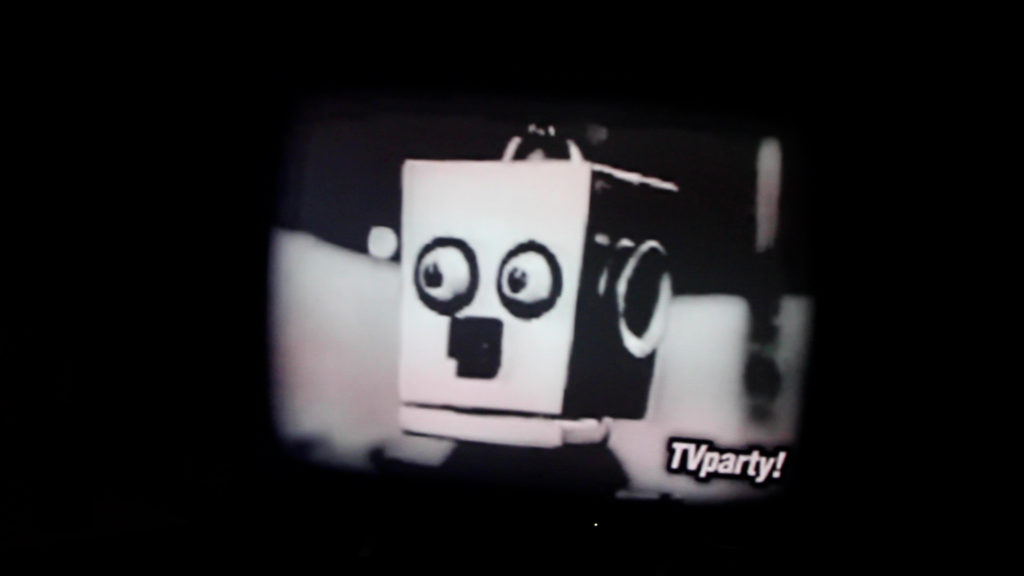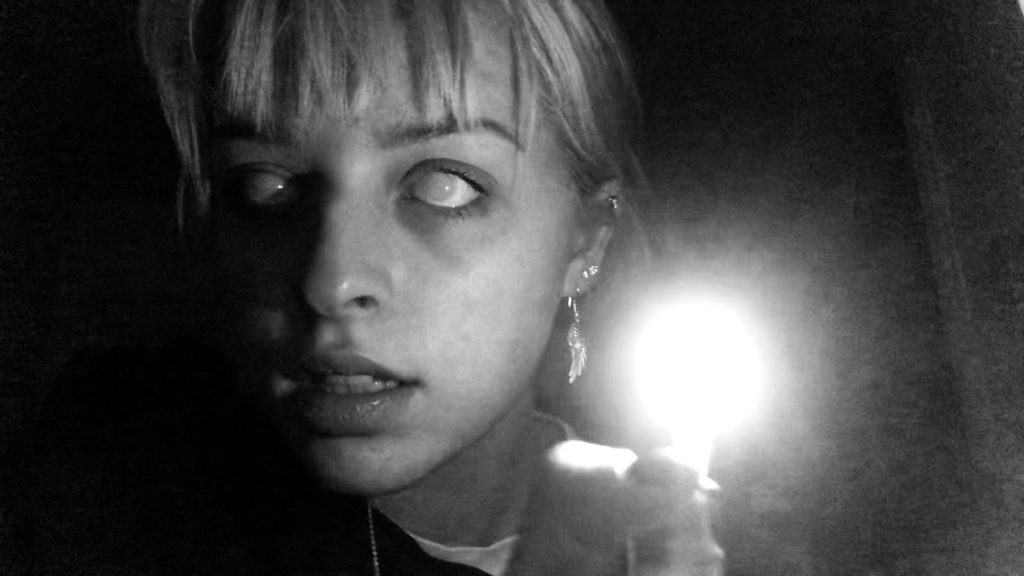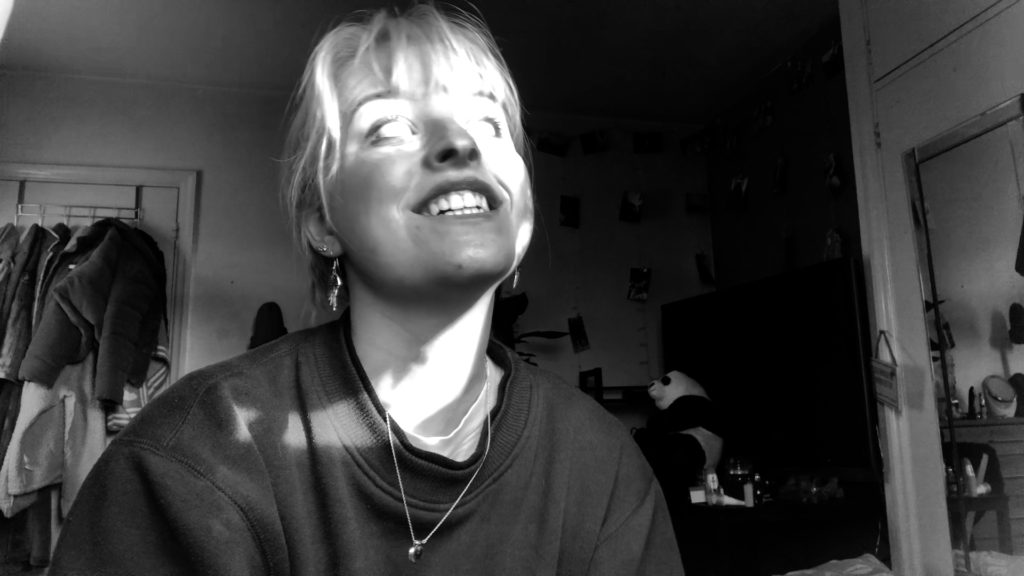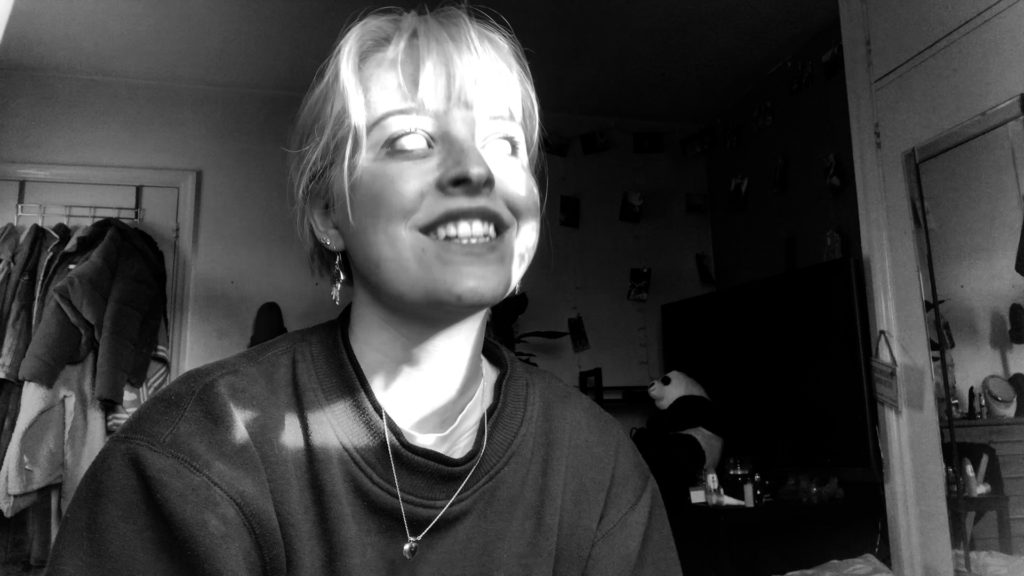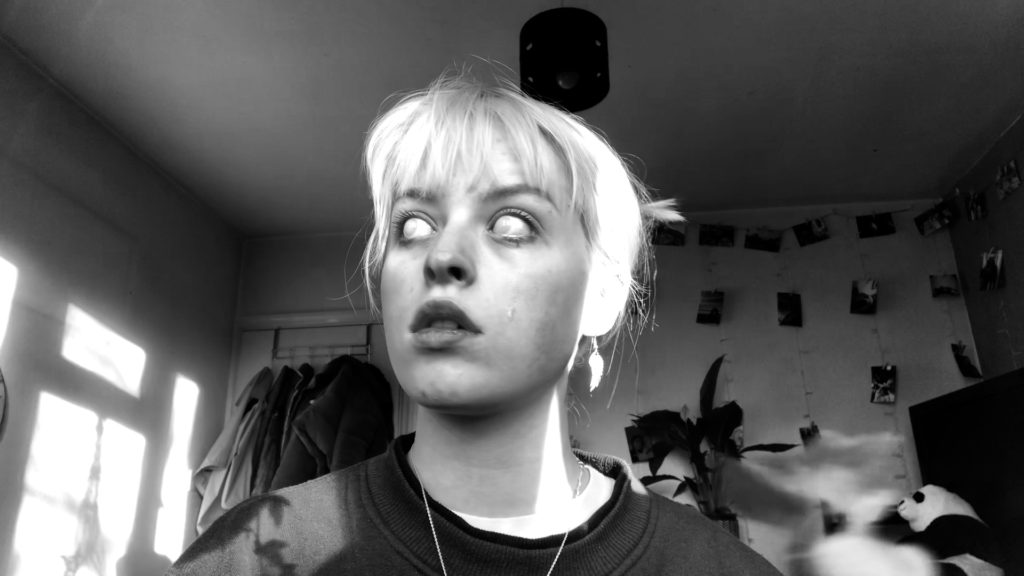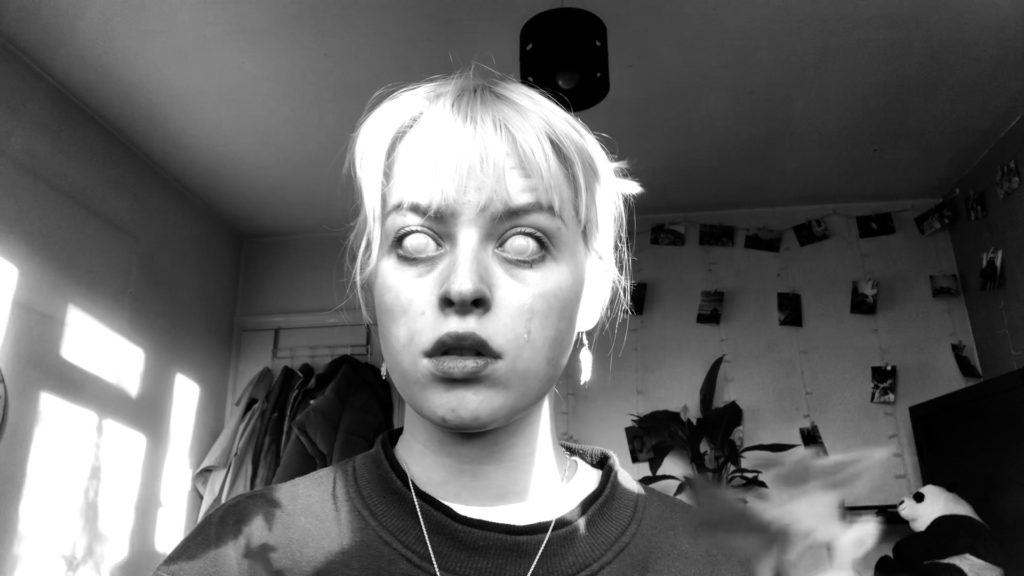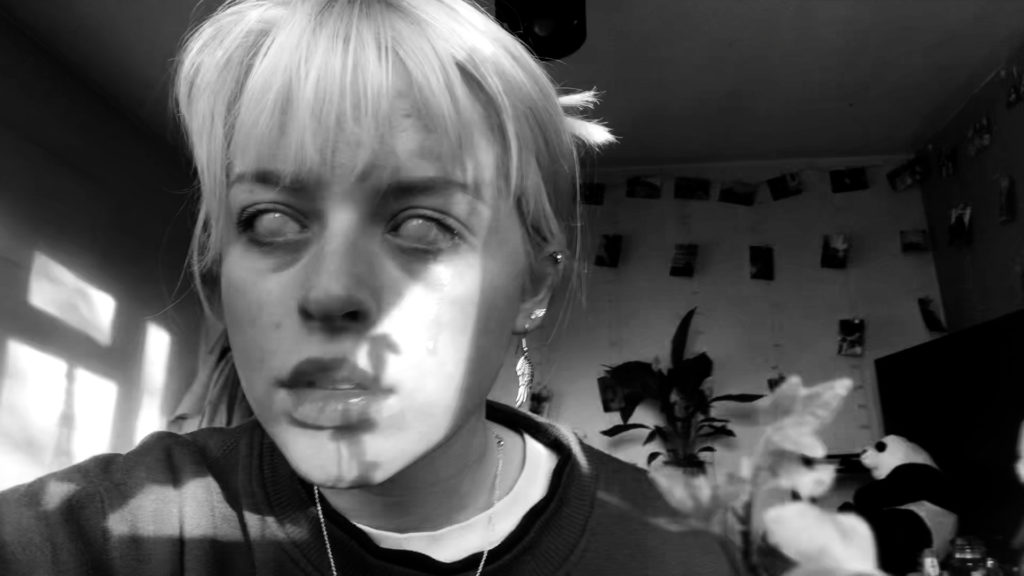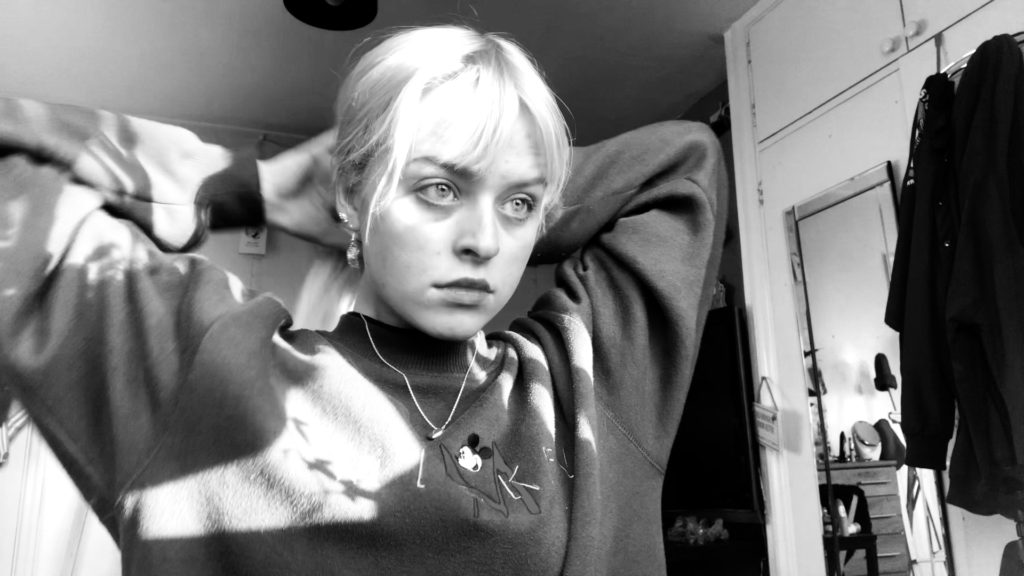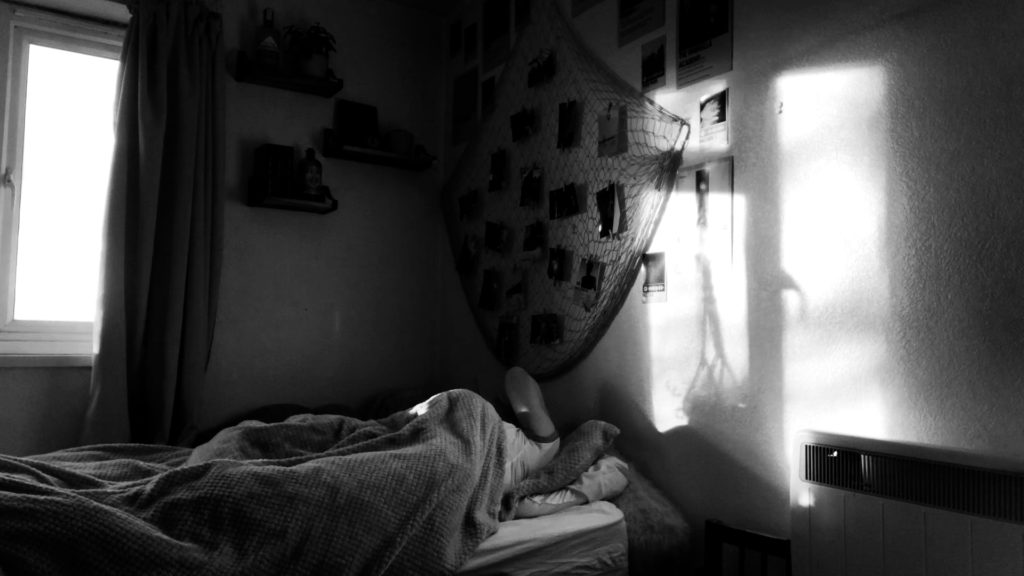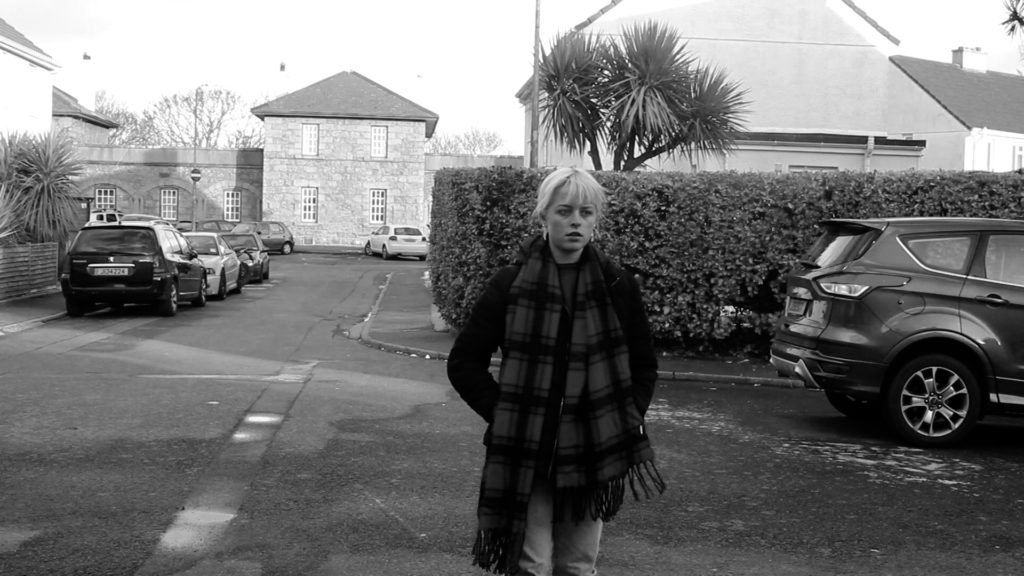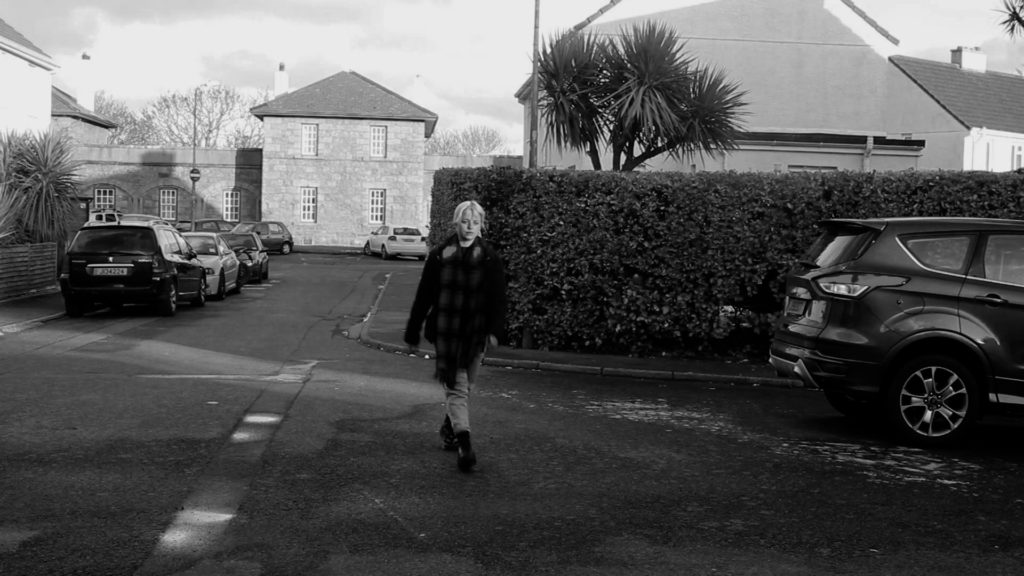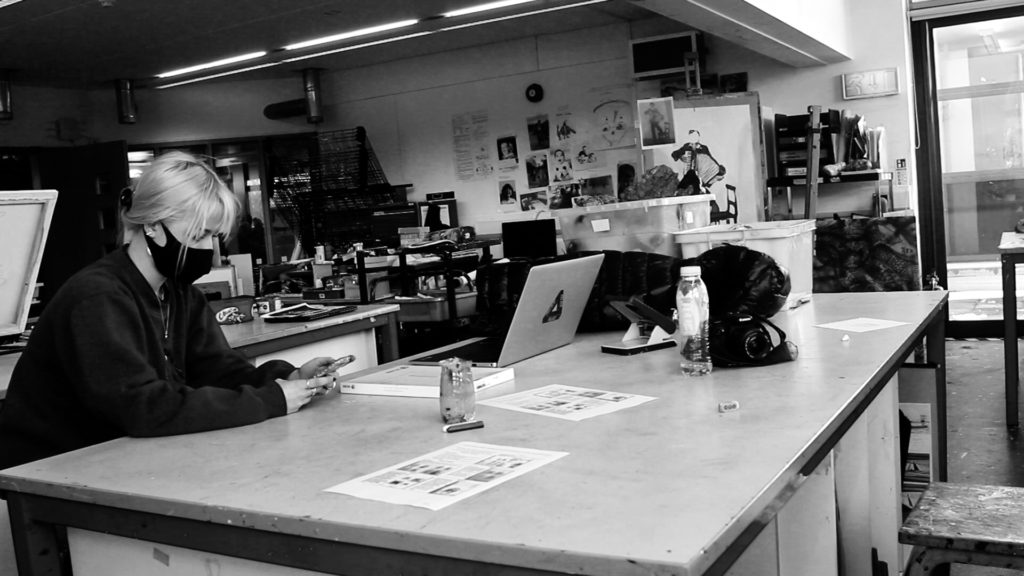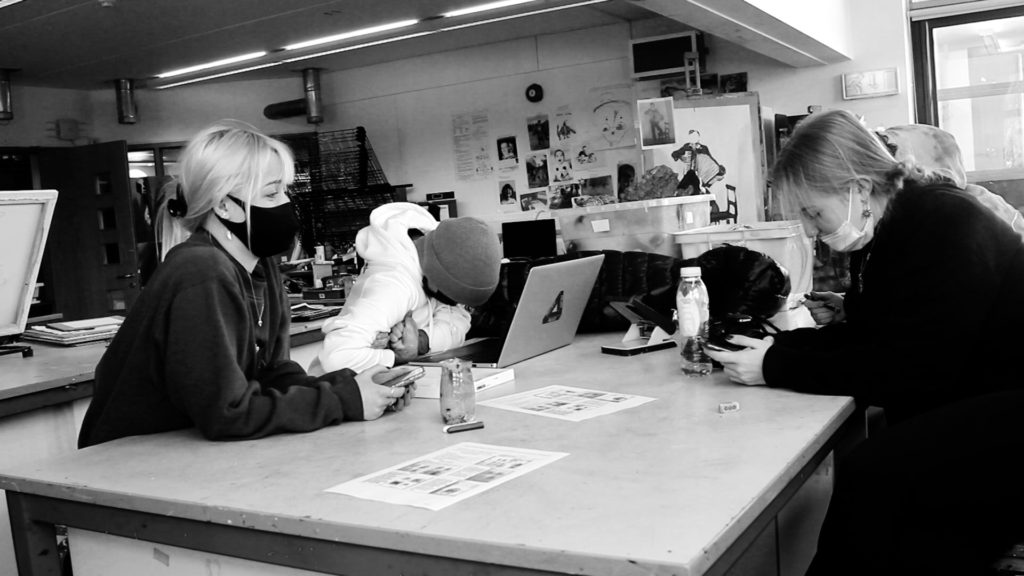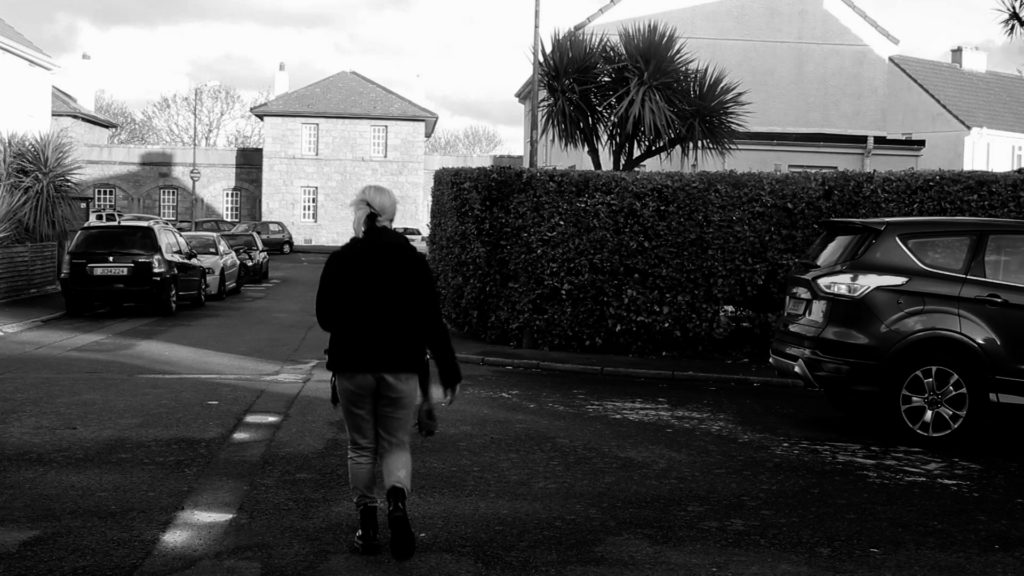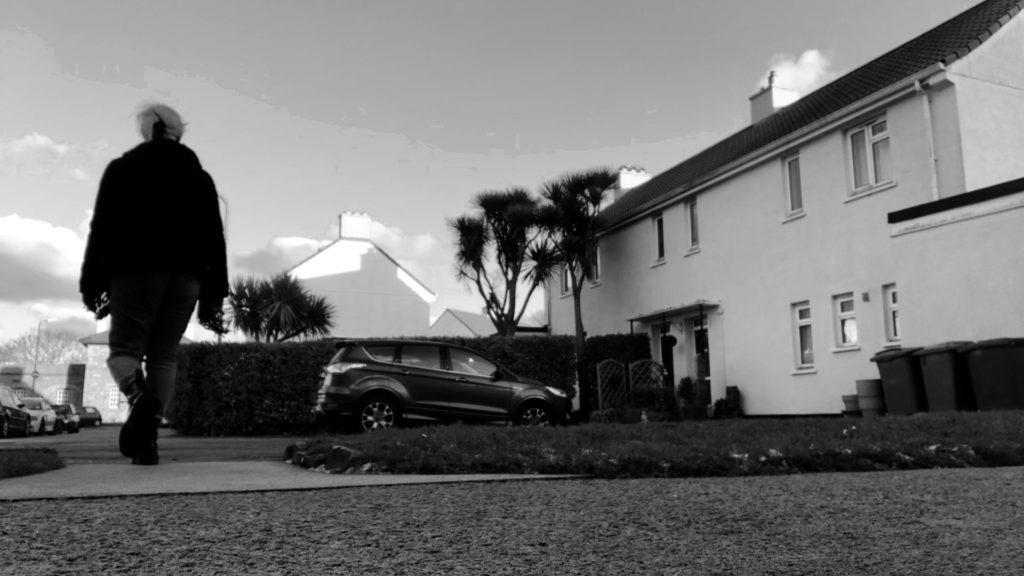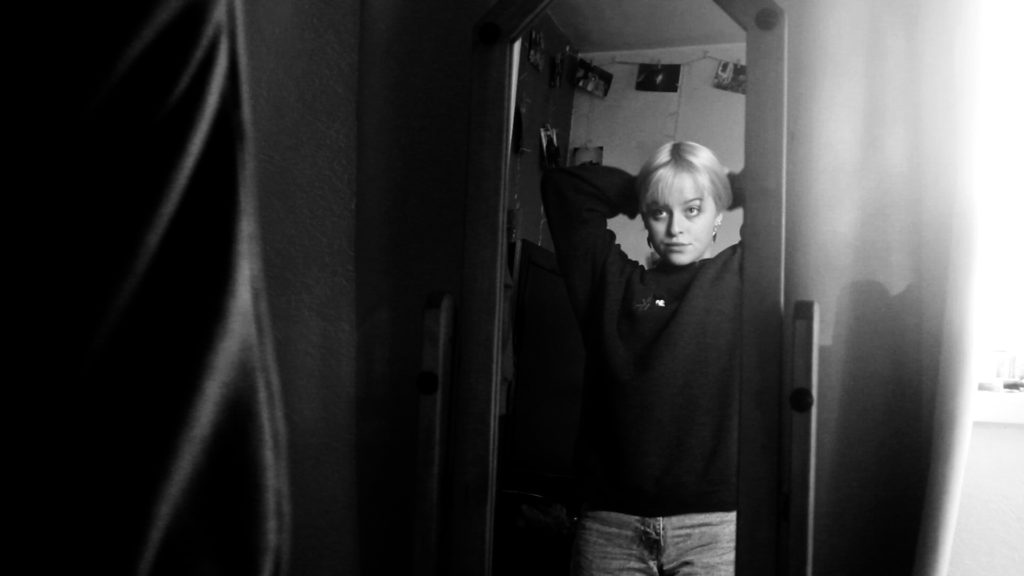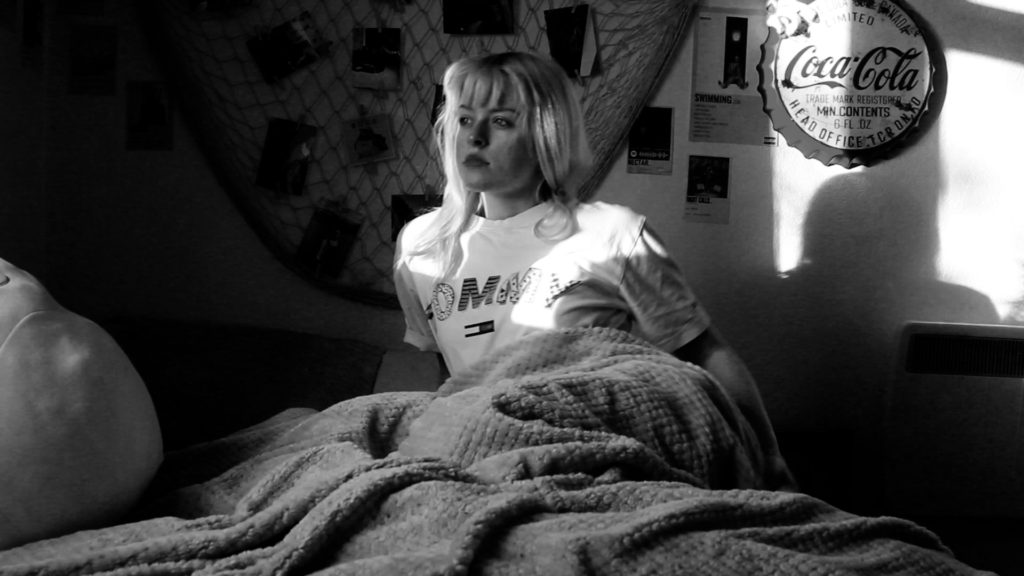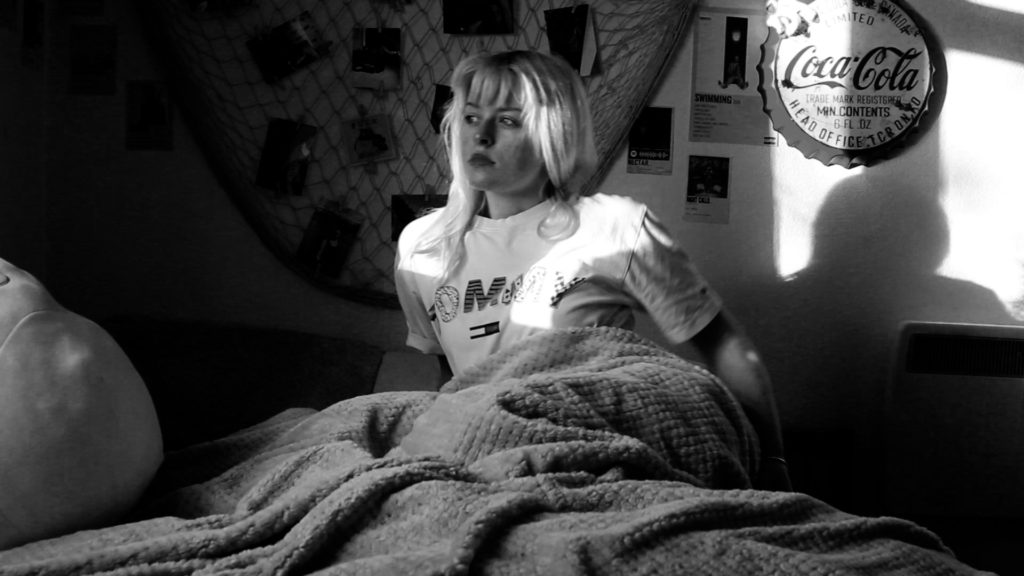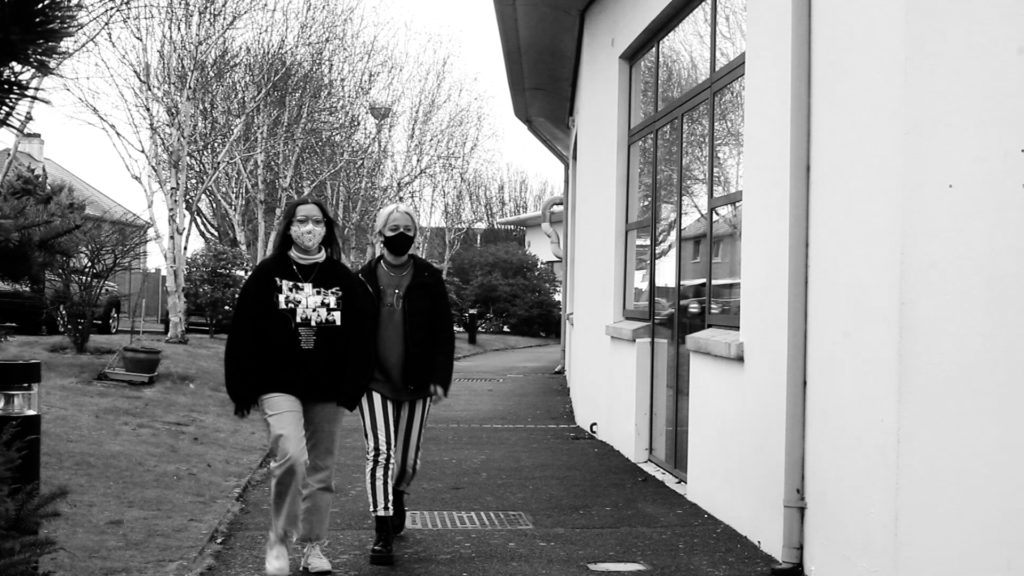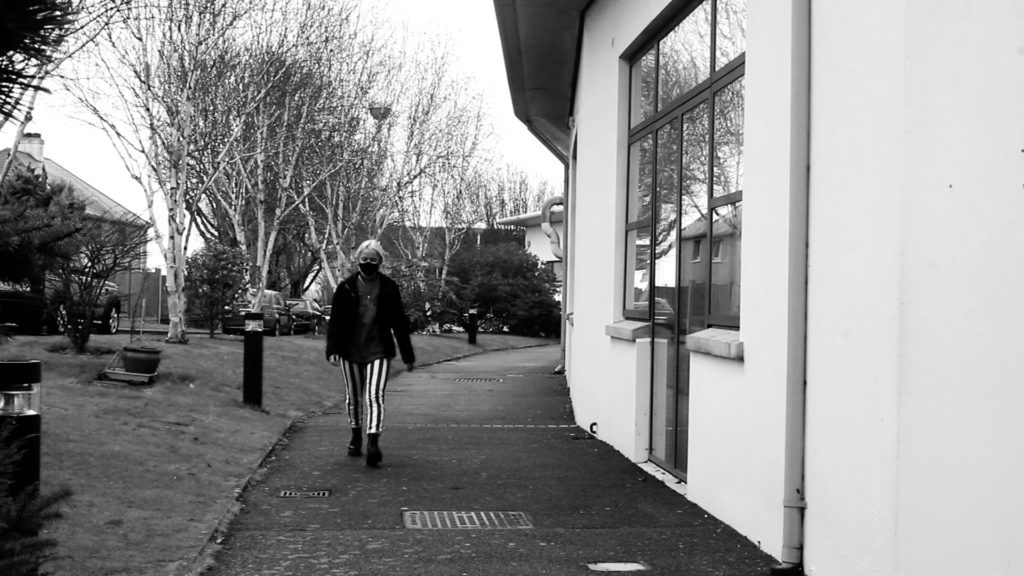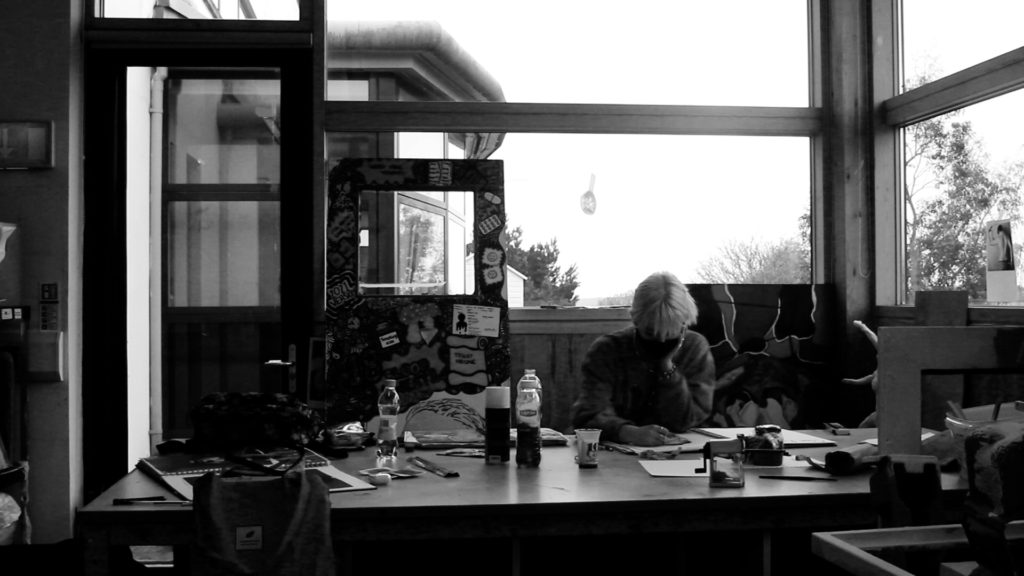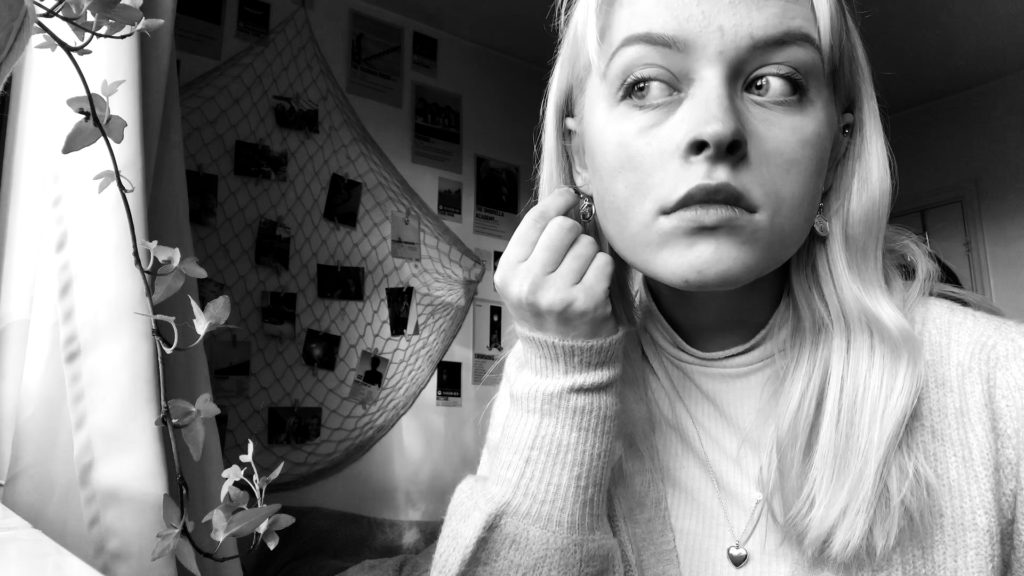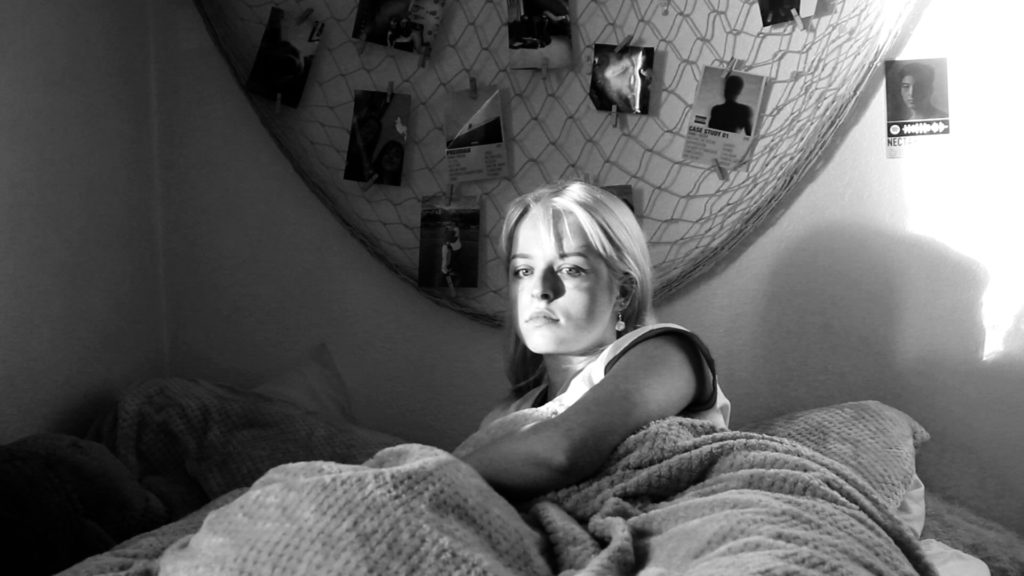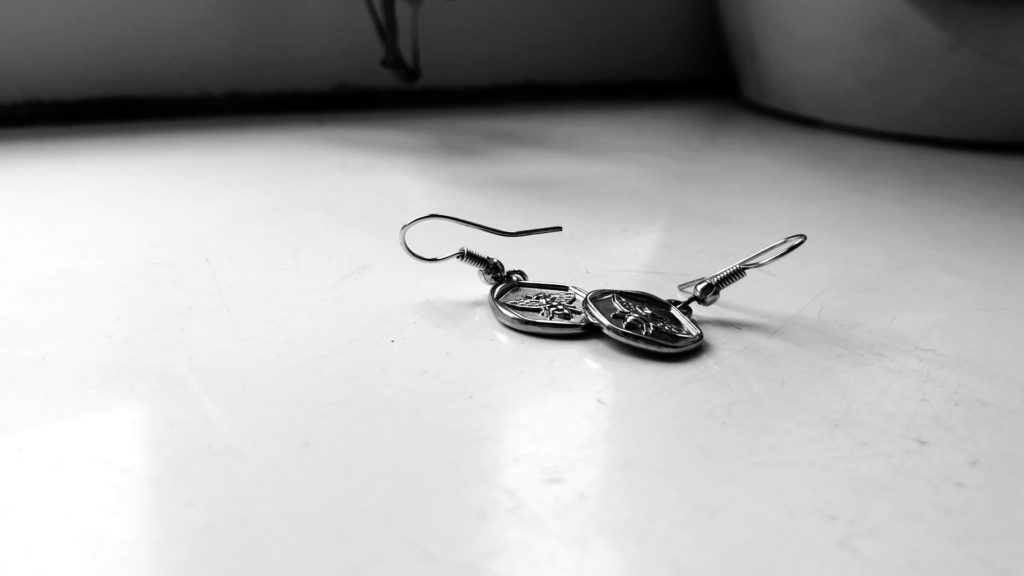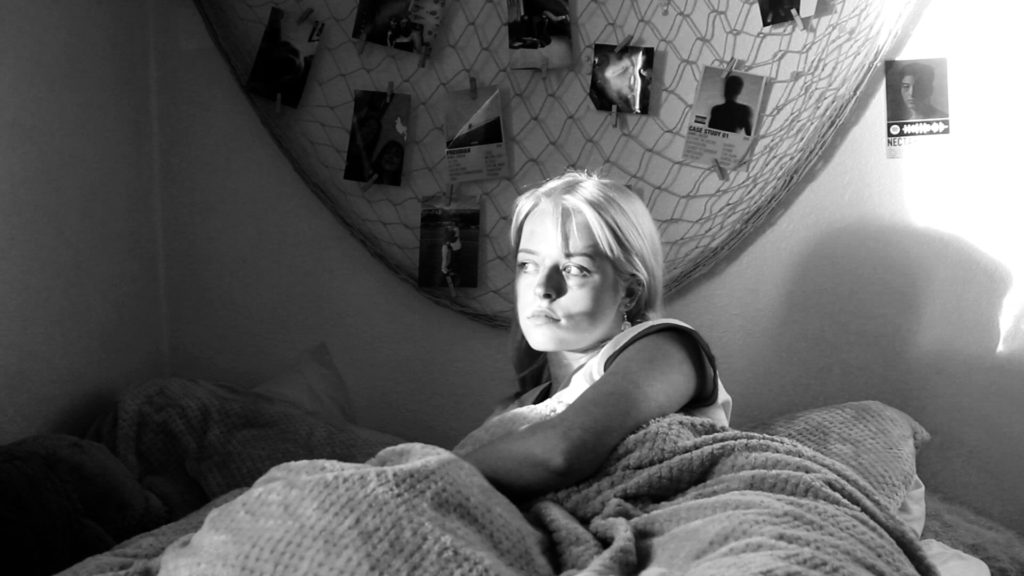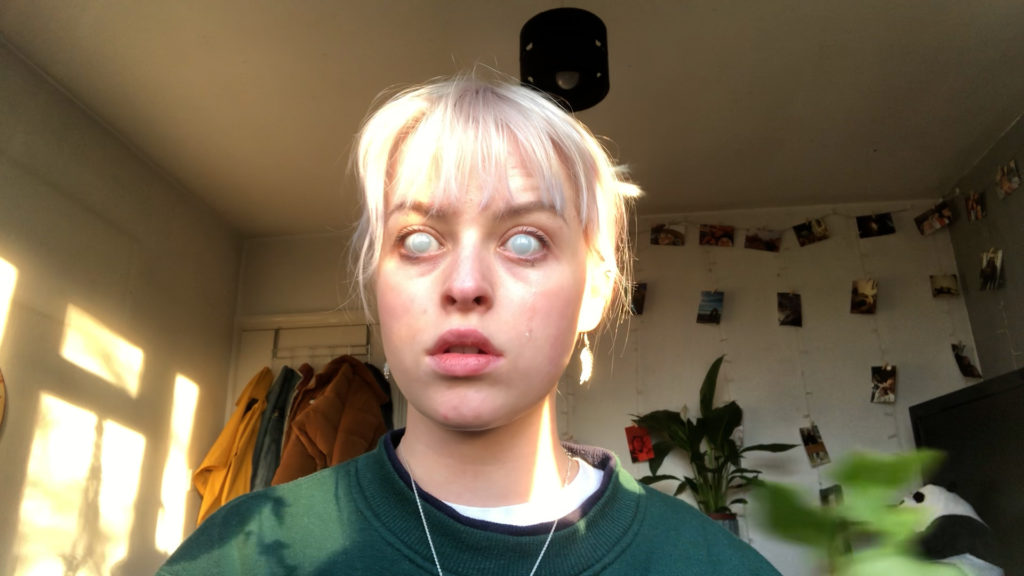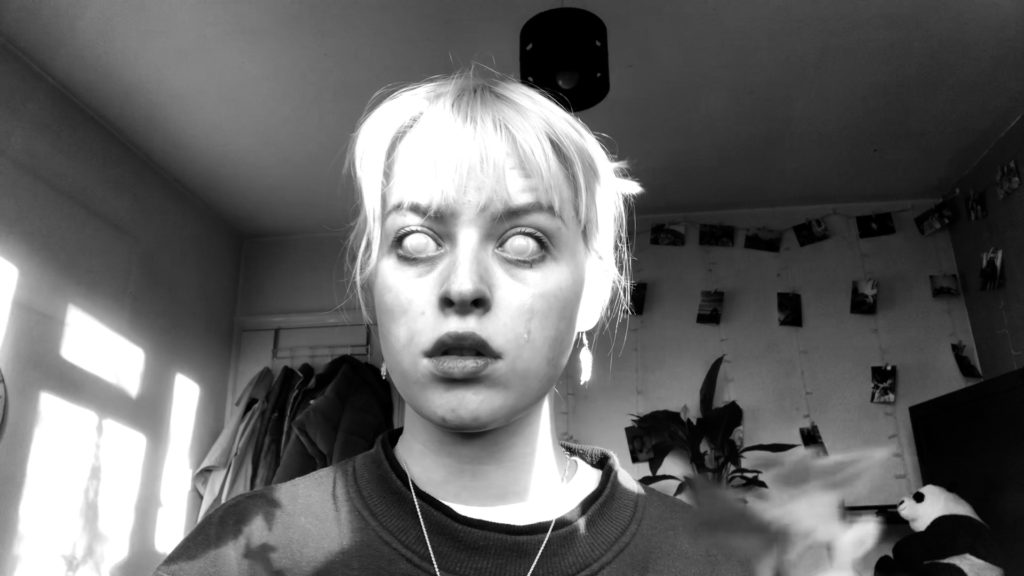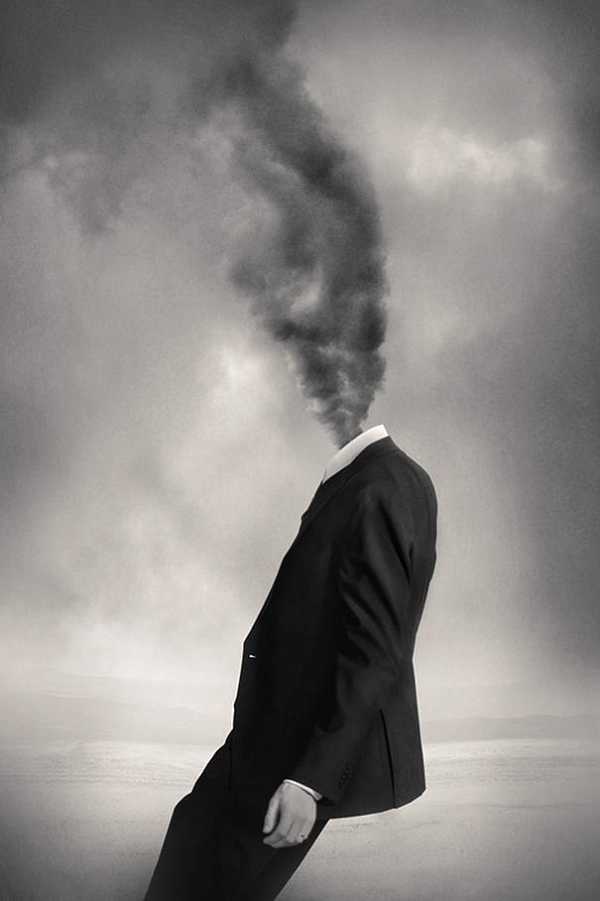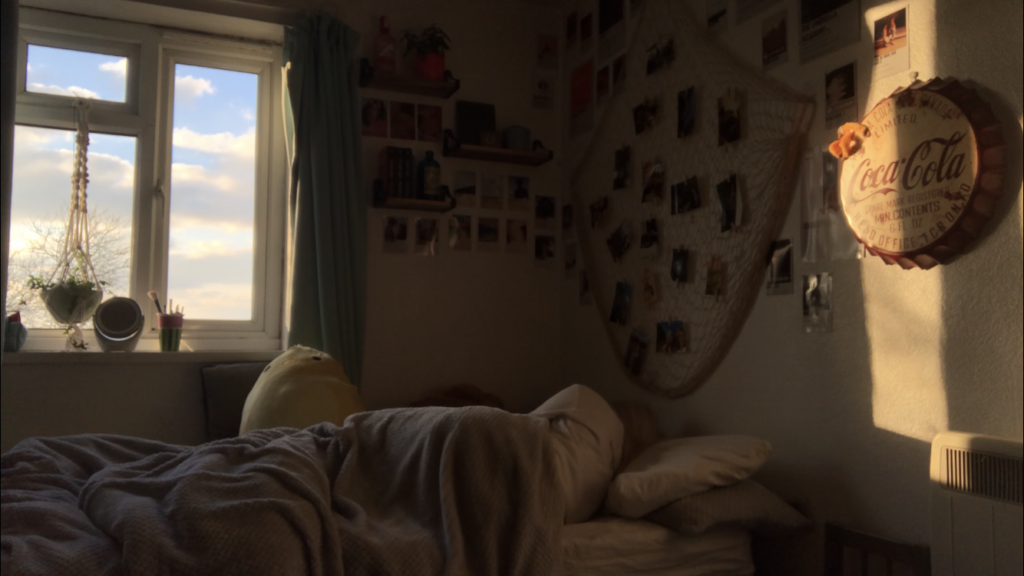Final Film: https://web.microsoftstream.com/video/5159dcd1-518b-4934-8bc4-56fc8612120e?list=studio – description – A short film about surrealism and dreams – showing a false sense of reality and delving into dissociation, nihilism and nightmares.
Photographic Responses/storyboard
When going through my film I decided to take picture of certain points where I thought the composition and the lighting was good and what I thought would be seen as a good photograph. Of course after I edited these photos individually and cropped them they would most likely look even better. Due to the film never usually having still shots I found it difficult to take a photo where I wasn’t moving in order for the photo to be in complete focus. I will most likely use a lot of these in my newspaper spreads after editing them and cropping them to look less like screenshots. I will definitely have to sharpen the image a lot more and possibly take some more photos of when I had the film in colour rather than in black in white as some of the shots looked a lot better in colour but due to the storyline fitting the black and white theme better I decided to change it from colour to black and white.
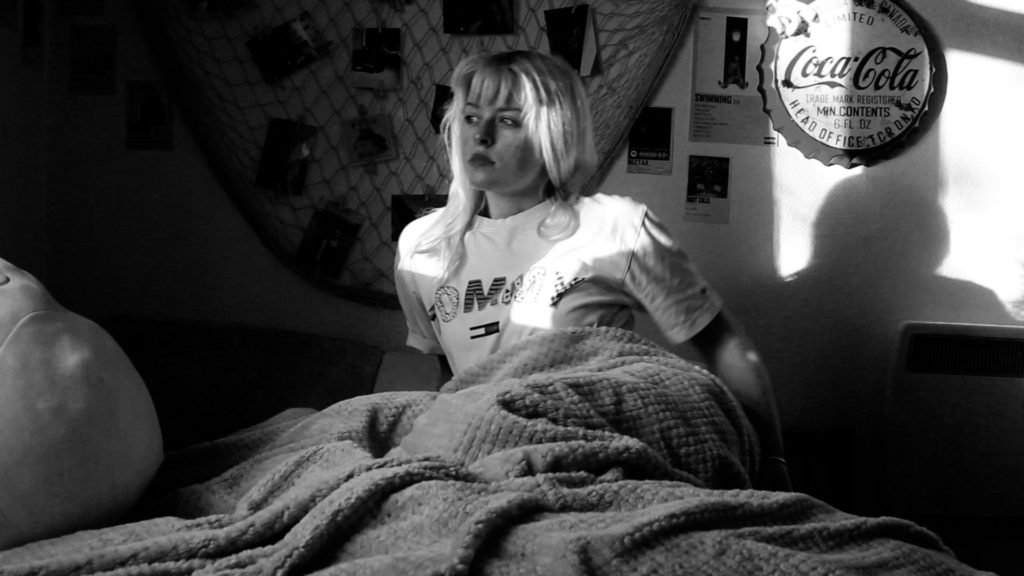
Depicting which photos looked better in colour compared to black and white. I found that when the lighting was hitting certain points of why face due to it being the golden hour and the lighting coming from the window sometimes the photo seemed to look better in colour as it was easier to see that the light was sunlight and was purposely done to highlight portions of my face. On the other hand, when the photo was put back into black and white the eyes seemed to look more disturbing and lifeless which contributes a lot to the kind of them of dreams/horror in my story.
Film Makers and Photographers Inspiration
I was mostly inspired by Chris Nolan’s film Inception and David Lynch’s film Lost Highway but I was also inspired by some photographers.
Kevin Corrado – his photography walks the line between lyricism and surrealism, never straying too far from either. He usually uses himself as the subject in his figurative works. His compositions are simple and elegant and the imagery could best be described as quiet and peaceful; at times seeming to transcend the boundaries of the image. Hid most known works consists of woodland photoshoots where humans appear from mysterious picture frames as if they were coming from another world. His work clearly revolves around the idea of dreams and how the world works. He has made this illusion buy using photoshop or another editing software where he has removed the rest of the persons body and made it look as if the person is floating .
Tommy Ingberg – a self-taught photographer and visual artist, born 1980 in Sweden. He works with photography and digital image editing, creating minimalistic and self-reflecting surreal photo montages dealing with human nature, feelings and thoughts. Tommy leaves the interpretation of his work up to the viewer but says:
“For me, surrealism is about trying to explain something abstract like a feeling or a thought, expressing the subconscious with a picture. The Reality Rearranged series is my first try at describing reality trough surrealism. During the two and a half years I have worked on the series I have used my own inner life, thoughts and feelings as seeds to my pictures. In that sense the work is very personal, almost like a visual diary. Despite this subjectiveness in the process I hope that the work can engage the viewer in her or his own terms. I want the viewers to produce their own questions and answers when looking at the pictures, my own interpretations are really irrelevant in this context.”
David Lynch – Gripping the audiences imagination is one of Lynch’s true talents when it comes to the film industry. Although he started off as an artist, his artistic skills contribute to his films and they start to make more sense when you remember where he started. Most of his film have very little dialogue and if they do it’s because its used more as poetry and each line has a purpose and specific meaning. Similar to how he frames each scene; each one is framed a certain way and creates a particular feeling with the viewers and often it leaves them mildly disturbed. Being one the biggest contributors to surrealist film industry, you would think that Lynch’s work would be fairly mainstream although it is quite the opposite. Although he is mostly a film maker now he felt as if he wanted to be known more as an artist, who typically won’t be as well known as a film maker. His most famous film (his debut film), Eraserhead, still stands as a benchmark in surrealist horror, and Lynch would go on to define surrealism in film through his later works Blue Velvet, Twin Peaks, Lost Highway, Mulholland Drive and Inland Empire. But what gives Lynch’s strange masterworks their strange ominous feeling upon his fans and longevity is his keen artistic eye; his fascination with the light and dark of American life, and his brilliant command of unique character and melodrama. It’s a powerful and heady combination of strange and amazing; a combination that has earned David Lynch a legion of devoted fans and earned him a place as one of the greatest filmmakers in history.
“We think we understand the rules when we become adults but what we really experience is a narrowing of the imagination.”
Chris Nolan – Inception – This Sci-Fi/Action film has inspired me along with photographers due to my idea being about surrealism, dreams and nihilism. The film itself is an interesting concept and has many plot twists that leave the audience shocked and wanting to know more. My own film consists of a similar concept of a dream within reality and my goal is to ensure that the viewer is so emerged within the film that they forget that they are watching the protagonists dream and not their real life. The plot twists are what makes a good film in my opinion hence why I picked inception as the movie that I want to base my project on with influences from other things also. Mental health also links into the film as Dom (the protagonist)is dealing with his own mental issues which impacts on the main plot of the movie and can cause a huge disaster of going into limbo. His poor mental health is caused by his late wife passing away due to the unbearable thought of not knowing what’s real life and what is just a dream, her death take a dramatic toll on his mental well-being as well as her being nihilistic which links into my film and the fact that my film is about what is real and what is just in our imagination.
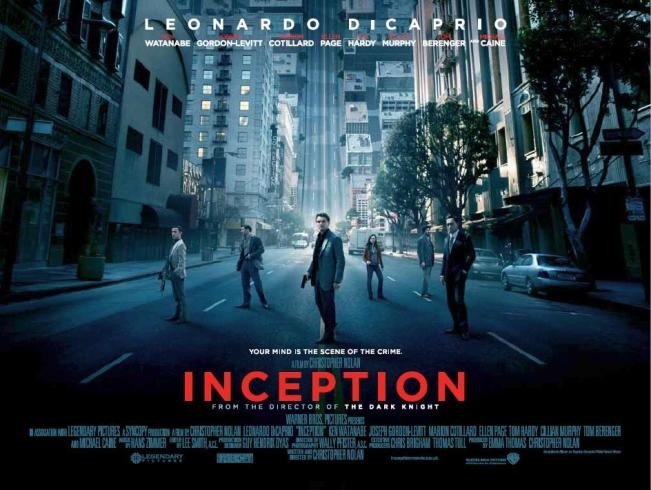
The way the film was played out also helped me to realise that I needed to have a beginning, middle and end:
The Beginning: Cobb is dragged to a table with Saito and Saito says something along the lines of “are you here to kill me? I know what this is. I’ve seen one before, many years ago. It belonged to a man from a half remembered dream.” (I think talking about his totem). The Middle: Dominic Cobb is the foremost practitioner of the artistic science of extraction, inserting himself into a subject’s dreams to obtain hidden information without the subject knowing, a concept taught to him by his professor father-in-law, Dr. Stephen Miles. Dom’s associates are Miles’ former students, who Dom requires as he has given up being the dream architect for reasons he won’t disclose. Dom’s primary associate, Arthur, believes it has something to do with Dom’s deceased wife, Mal, who often figures prominently and violently in those dreams, or Dom’s want to “go home” (get back to his own reality, which includes two young children). Dom’s work is generally in corporate espionage. As the subjects don’t want the information to get into the wrong hands, the clients have zero tolerance for failure. Dom is also a wanted man, as many of his past subjects have learned what Dom has done to them. One of those subjects, Mr. Saito, offers Dom a job he can’t refuse: to take the concept one step further into inception, namely planting thoughts into the subject’s dreams without them knowing. Inception can fundamentally alter that person as a being. Saito’s target is Robert Michael Fischer, the heir to an energy business empire, which has the potential to rule the world if continued on the current trajectory. Beyond the complex logistics of the dream architecture of the case and some unknowns concerning Fischer, the biggest obstacles in success for the team become worrying about one aspect of inception which Cobb fails to disclose to the other team members prior to the job, and Cobb’s newest associate Ariadne’s belief that Cobb’s own subconscious, especially as it relates to Mal, may be taking over what happens in the dreams. The End: Saito and Cobb sitting together at the table again. Same kind of setup, but this time Saito says, “have you come to kill me? I’m waiting for someone..” and Cobb finishes his sentence by saying “someone from a half remembered dream.” Cobb essentially tells him they’re in limbo and they presumably kill themselves to wake up to reality. Although the ending leaves the viewer wondering if Cobb is back in reality or if he is still trapped in a dream, he can tell due his totem. Dom Cobb’s totem is a spinning tractricoid top that originally belonged to Mal (his wife). Should he spin the top and it topples over, he is awake; if it continues to spin, then he is still dreaming.

